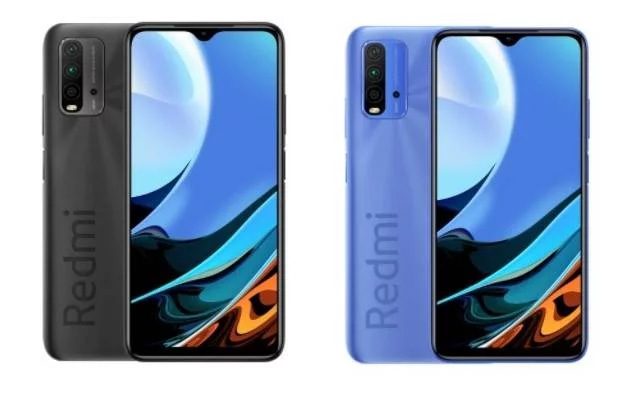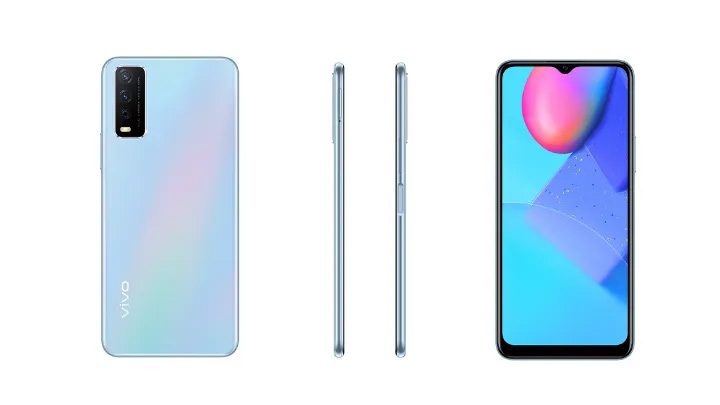The under 20k segment was filled with quite some phones, and recently we saw two phones launch in the same budget segment. Xiaomi Nepal launched its Redmi 9 Power, an awaited launch, and Vivo launched its vivo Y12s. Let’s compare the two phones head to head.
Redmi 9 Power vs. Vivo Y12s- Specifications
| Redmi 9 Power | Vivo Y12s | |
|---|---|---|
| Dimensions & Weight | 162.3 x 77.3 x 9.6 mm, 198g | 164.4 x 76.3 x 8.4 mm, 191g |
| Display | 6.53 inches, FHD+, IPS LCD | 6.51 inches, HD+, IPS LCD |
| Processor | Snapdragon 662, 2.0GHz Octa-core | Mediatek Helio P35, 2.35GHz Octa-core |
| Memory | 4GB RAM + 64GB/128GB (UFS 2.1/ 2.2) | 3GB RAM + 32GB (eMMC 5.1) |
| Software | Android 10,MIUI12 | Android 10, Funtouch OS 11 |
| Connectivity | Wi-Fi 802.11 a/b/g/n/ac, Bluetooth 5.0, GPS | Wi-Fi 802.11 a/b/g/n/ac, Bluetooth 5.0, GPS |
| Camera | Quad camera (48MP+8MP+2MP+2MP) 8MP front camera | Dual camera (13MP+2MP) 8MP front camera |
| Battery | 6000mAh, 18W charging | 5000mAh, 10W charging |
| Price in Nepal | Rs. 18,999(4+64GB) Rs. 20,999(4+128GB) | Rs. 17,999 |
Redmi 9 Power vs. Vivo Y12s- Comparison
Design and Display
Firstly, the Redmi 9 Power features a 6.53-inch IPS LCD with FHD+ resolution, and on the other hand, Vivo Y12s sports a similar 6.51 inch IPS LCD but with only HD+ resolution. Both the phones have a waterdrop notch housing the front camera, and Redmi 9 Power has a slightly better screen-to-body ratio of 83.4% instead of the 81.6% of the Vivo Y12s.
Both the phones have a fingerprint sensor on the side, and on the back, vivo y12s has a gradient finish, and Redmi 9 Power has an anti-fingerprint texture with the camera module and the branding on the left side of both phones. Redmi also leaps with its water-repellent coating.
Camera and Software
Redmi 9 Power already wins on the battle of cameras with a quad-camera setup compared to the dual-camera setup on the Vivo Y12s. Redmi 9 Power has a better 48MP primary camera compared to the vivo’s 13MP primary camera. Not only the higher megapixels, but Redmi 9 Power main camera also offers a larger image sensor & wider f/1.8 aperture.
The two extra cameras on the Redmi 9 Power are the 8MP ultra-wide lens and 2MP macro sensor, whereas both the phones have a 2MP depth sensor. And on the front, both have a similar 8MP selfie camera but vivo Y12s comes with a wide f/1.8 aperture compared to f/2.0 aperture on Redmi 9 Power.
The Vivo Y12s runs on Android 10 with Funtouch OS 11 on top, whereas the Redmi 9 Power runs on Android 10 with MIUI 12 on top. The MIUI is known for its ads and heavy bloatware, but MIUI still gives you options of deleting many pre-installed apps, unlike the Funtouch OS on the vivo Y12s. MIUI 12 on Redmi 9 Power is better optimized, unlike the Funtouch, which feels dated.
-
Also read: Xiaomi Mobile Price In Nepal
Performance and Battery
Performance is where the Redmi 9 Power leaves the vivo Y12s way behind. Redmi 9 Power comes with a Snapdragon 662 SoC complemented by 4GB RAM. On the other hand, Vivo Y12s is fueled by an Helio P35 SoC complemented by 3GB RAM. Although the Helio P35 on vivo has a higher CPU clock speed 2.35 GHz compared to only a 2.0GHz clock speed on Redmi, Snapdragon 662 still offers better performance on both CPU & GPU benchmarks.
The storage options are also better on Redmi, where you can choose from 64GB and 128GB but on vivo; you get only 32GB storage.
Vivo Y12s comes with a 5000 mAh battery whereas Redmi 9 Power offers a massive 6000mAh battery. Also, the Redmi 9 Power supports faster charging of 18W instead of the 10W of the vivo Y12s.
Pricing
Both the phones are priced at a similar price range, with Vivo Y12s priced at Rs.17,999 for the 3GB+32GB variant, whereas Redmi 9 Power has two variants priced at Rs.18,999 for the 4+64GB variant and Rs.20,999 for the 4+128GB variant.
Redmi 9 Power vs. Vivo Y12s- Pros& Cons
Redmi 9 Power
Pros
- 6000mAh battery
- Better camera setup
- 18W fast charging support
- Faster UFS 2.1 storage
- Splash-proof body
- FHD+ Display
- Dual-Stereo loudspeakers
- Type-C port
Cons
- Weighs almost 200 grams

Vivo Y12s
Pros
- The front camera comes with a wide aperture
- Lightweight at 191 grams
Cons
- HD+ display
- Unimpressive CPU & GPU performance for the price
- Ony 10W charging support
- No ultra-wide camera
- MicroUSB port








